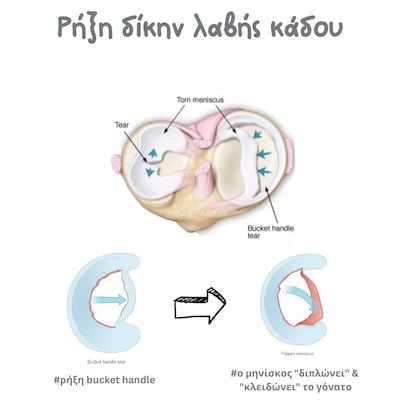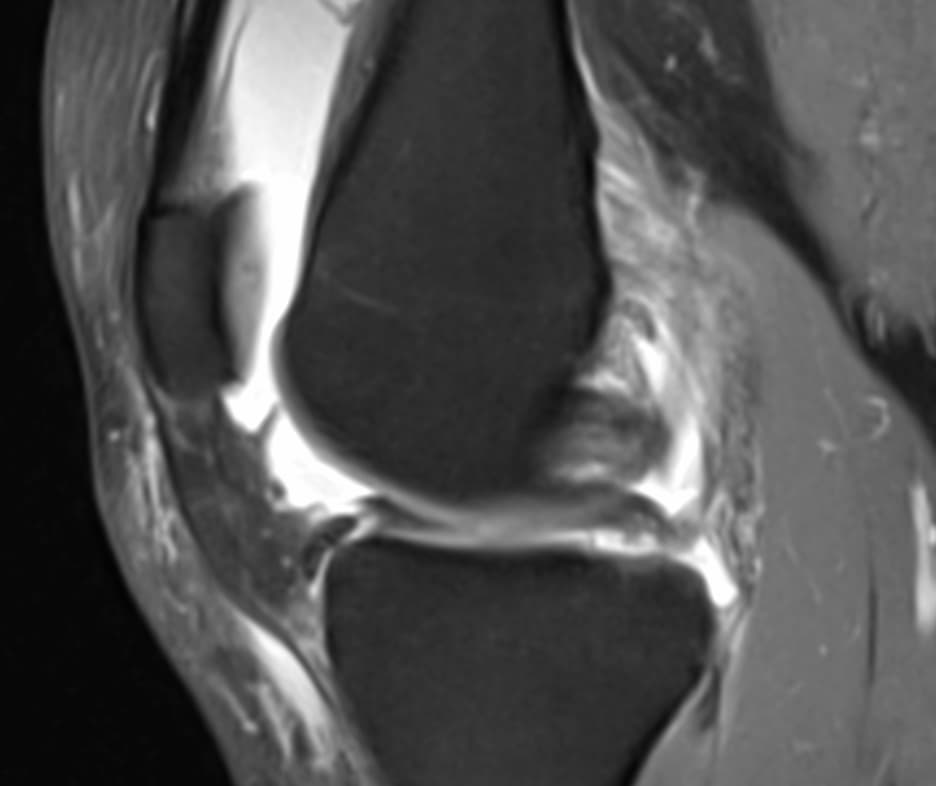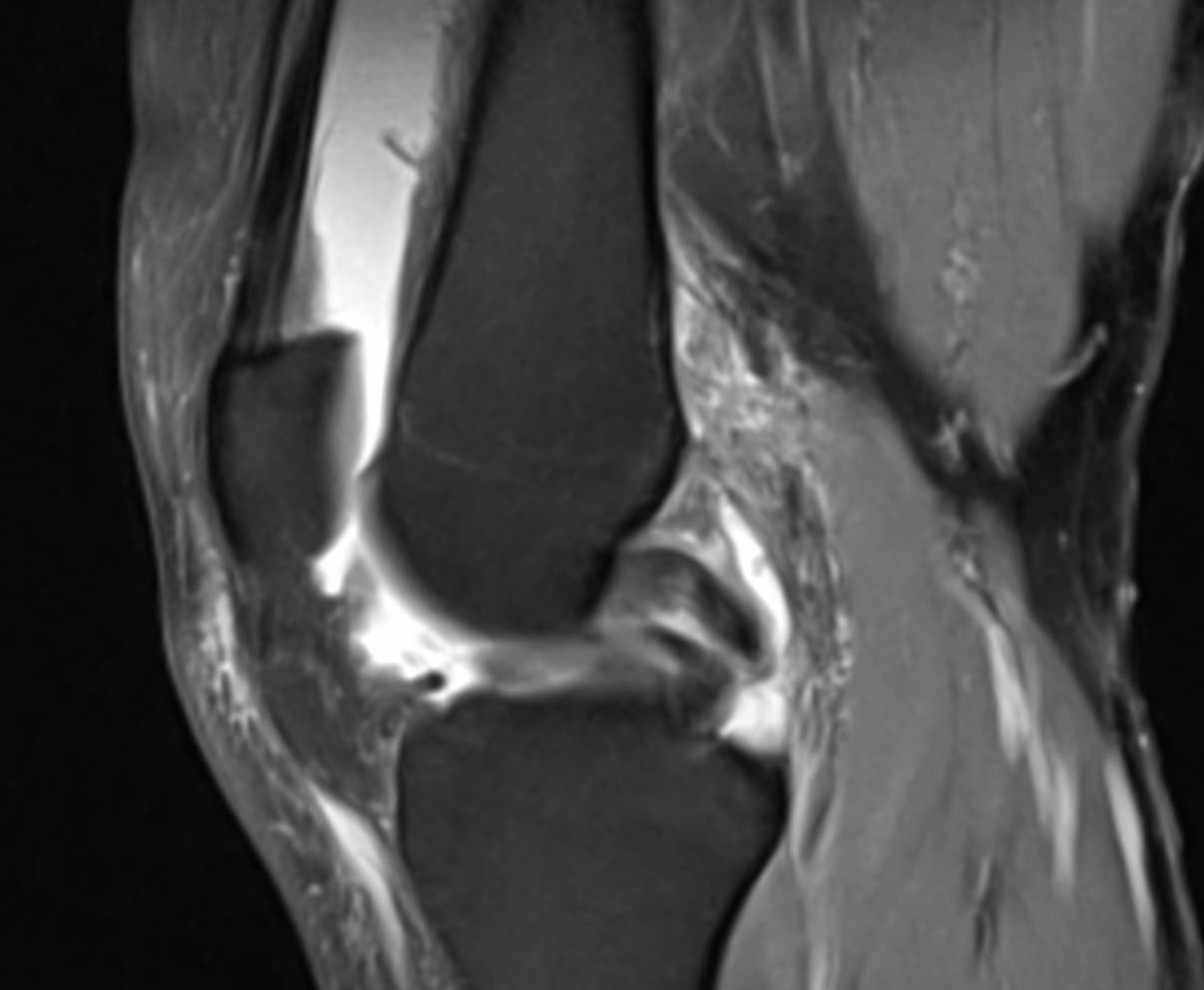Georgios Panagopoulos MD | Orthopaedic Surgeon

Table of contents
What is a locked knee?
Locked knee refers to a knee that can no longer fully extend. Essentially something happens to your knee and suddenly you cannot fully straighten it anymore. A “locked knee” is totally different than a knee that gradually deteriorates or is swollen and painful for a long time. In a “locked knee” situation, your knee was normal a moment ago. Then a specific event happens, usually a twisting or bending injury, or your knee suddenly gets stuck after kneeling or squatting, and you realize that you cannot straighten it anymore.

What injuries are associated with a locked knee?
The most common injury associated with a locked knee is a displaced locked bucket handle meniscal tear. This is essential a large meniscal tear that flips and jams the joint. In fact, a locked knee equals an unstable bucket handle until proven otherwise. Other rarer causes include an ACL tear that jams in extension (locking or pseudo-locking), a loose body or an unstable lateral meniscus with a flimsy posterior horn.
What imaging should be obtained?
An MRI scan is the imaging modality of choice in the case of a locked knee. This should be obtained urgently, meaning you shouldn’t wait weeks or months. You should have the MRI within a couple of days.



Can it wait?
It cannot wait. If a displaced bucket handle tear is caught early, the more likely your surgeon will be able to repair it. Therefore, it should be treated ideally within 6 weeks at the latest, if you want your surgery to have a good chance of success. If left untreated, odds are that your bucket handle will degenerate and will no longer be repairable. If that happens, you bucket handle may have to be removed instead, which means that you will lose a good chunk of your meniscus. This increases massively your chance to develop knee arthritis and trash your knee.


What's the treatment?
A locked knee shoulder be urgently treated surgically, ideally with arthroscopic meniscal repair, to reduce and fix the underlying bucket handle tear. If the aforementioned window of opportunity is lost, then arthroscopic meniscal debridement is performed, with the understanding that the prognosis is worse.
Knee arthroscopy may last from 20 minutes to 2 hours, depending on the complexity of the case. During knee arthroscopy you will lie in the supine position (on your back) and a tourniquet will be applied on your thigh. Your skin will be cleaned with an antiseptic solution. The surgeon will make a small incision (4mm) in the front of your knee and insert a small camera, called arthroscope, which will project images of your knee joint in a video screen. The arthroscope is essentially a slim telescope (4.5mm or 2.9mm) with a high-definition camera, surrounded by a fiber-optic tube that functions as a light source.
In order to see inside the joint and to undertake any procedures, the joint needs to be ‘opened’ up. This is done by distending the joint with normal saline fluid. A specialized pump is used to control the pressure and rate of fluid going into the joint, to optimize visualization. The surgeon will make one or two more small incisions in the front of your knee to insert tiny instruments in order to address all pathology found. Multiple arthroscopic instruments may be used during the procedure. These include probes, graspers, punches, rasps, elevators and suture cutters. Power instruments, such as shavers, or radiofrequency probes may also be used. Small implants may be used during the procedure. Suture-anchors are the most common implant used during arthroscopic knee surgery. A suture-anchor is essentially a small device made usually out of biocomposite material, loaded with sutures through a small eyelet. The anchor is placed flash with the bone and the suture is threaded through the tissue to repair. This allows the damaged tissue to be repaired, for example during a meniscal repair. The use of autograft is also common during knee arthroscopy. This is usually expendable tendon that can be harvested from elsewhere around your knee. Hamstrings, patellar or quadriceps are commonly used autografts. Once surgery is finished, all incisions will be closed, and a bandage will be placed on top. Your knee will be protected in a knee immobilizer after surgery.
What are the advantages of knee arthroscopy?
- No admission is required - you can return home the same day
- Smaller incisions - better cosmetic result.
- Postoperative pain is less, as the surrounding tissues have not been disturbed
- Quicker patient recovery
- Quicker return to work - activities of daily living.
- Actual procedure can be undertaken more accurately (under magnification and with more accurate instruments)
- Complications are much less common than with open surgery (infection, bleeding, etc.).

What should you expect after the procedure?
Recovery is very important after an arthroscopic meniscal repair. You will need a knee brace for up to 6 weeks, followed by an individualised rehabilitation program.
To summarise, a locked knee is typically associated with a bucket handle meniscal tear. It is very important to get a timely diagnosis within a few days with an MRI scan. Delays may preclude the possibility of a successful meniscal repair and accelerate arthritis.
FAQs - Frequently Asked Questions
What is a locked knee?
Locked knee refers to a knee that can no longer fully extend. Essentially something happens to your knee and suddenly you cannot fully straighten it anymore.
What is the classic associated lesion?
The most common injury associated with a locked knee is a displaced locked bucket handle meniscal tear. This is essential a large meniscal tear that flips and jams the joint.
Can it wait?
It cannot wait. If a displaced bucket handle tear is caught early, the more likely your surgeon will be able to repair it. Therefore, it should be treated ideally within 6 weeks at the latest, if you want your surgery to have a good chance of success.
Do I need imaging studies?
An MRI scan is the imaging modality of choice in the case of a locked knee. This should be obtained urgently, meaning you shouldn’t wait weeks or months. You should have the MRI within a couple of days.
What's the treatment?
A locked knee shoulder be urgently treated surgically, ideally with arthroscopic meniscal repair, to reduce and fix the underlying bucket handle tear. If the aforementioned window of opportunity is lost, then arthroscopic meniscal debridement is performed, with the understanding that the prognosis is worse.
Find us
Book an appointment with us today
